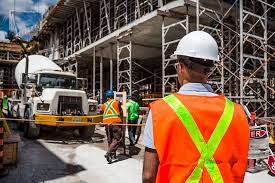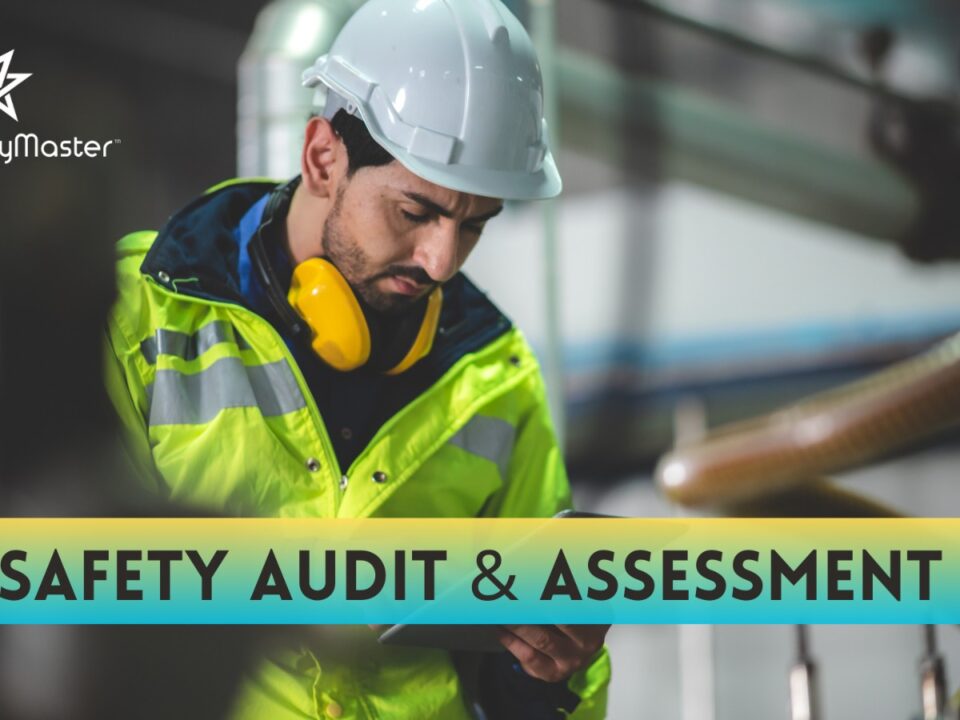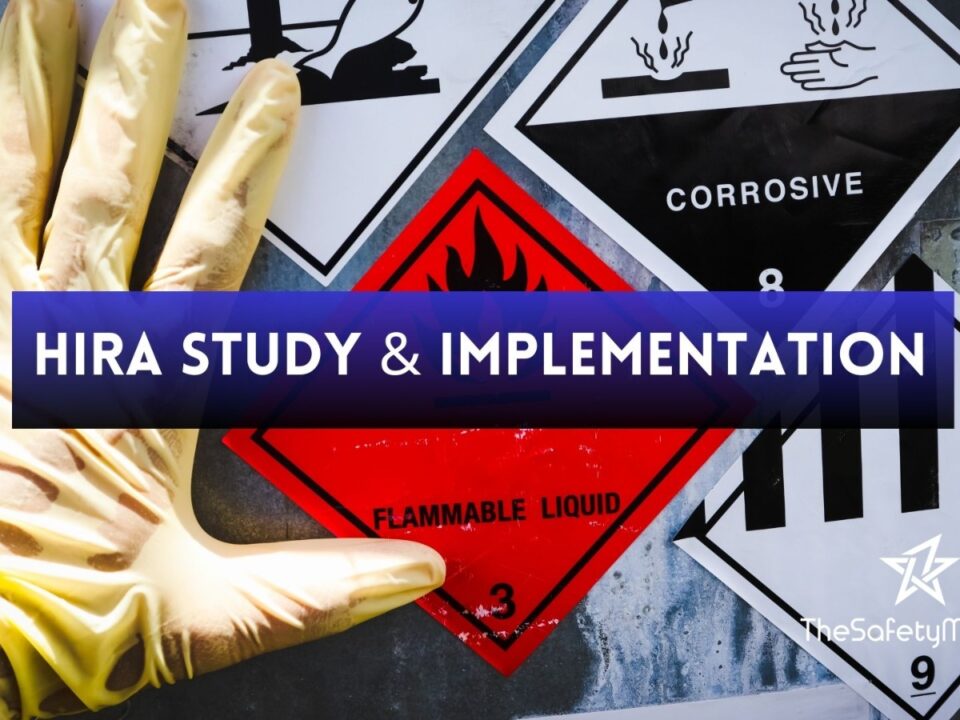Prestartup Safety Review Study

Top Safety Company of India TheSafetyMaster
September 2, 2023
Quantitative Risk Assessment Study in chemical industry
September 4, 2023Safety Consultant
Imagine the excitement and anticipation that comes with starting a new venture. The possibilities seem endless, and the prospect of success is intoxicating. However, amidst the enthusiasm, it is crucial not to overlook one vital aspect – safety. The Prestartup Safety Review Study aims to address this important concern and ensure that every new business embarks on its journey with a solid foundation of safety protocols in place.
In this comprehensive article, we will delve into the world of prestartup safety reviews. We will explore why they are essential for any aspiring entrepreneur or business owner, what steps should be taken to conduct a thorough review, and how successful implementation can lead to long-lasting benefits. By the end of this read, you can expect to have a clear understanding of why prioritizing safety from the very beginning sets the stage for a prosperous and secure future.
Understanding the Prestartup Safety Review
Before embarking on a journey toward success, it is vital to equip oneself with the necessary tools to ensure a smooth and secure voyage. In the realm of business ventures, this holds true for startups as well. The Prestartup Safety Review, often abbreviated as PSSR, is a comprehensive assessment process that examines potential hazards and establishes safety protocols prior to commencing operations. It serves as the compass that guides entrepreneurs toward their goals while safeguarding their endeavors from unforeseen risks.
The Prestartup Safety Review is not merely a bureaucratic formality; rather, it is an essential precautionary measure undertaken by forward-thinking entrepreneurs who prioritize the well-being of their employees and the sustainability of their ventures. By thoroughly understanding and implementing this review process, business owners demonstrate their commitment to creating a safe working environment where individuals can thrive and contribute effectively to achieving organizational objectives. Moreover, by proactively identifying potential hazards during the startup phase, companies can save invaluable time and resources by preventing accidents or costly setbacks.
The Importance of Conducting a Prestartup Safety Review
Embarking on a new venture is an exhilarating experience, filled with anticipation and dreams of success. However, amidst this excitement, it is crucial not to overlook the paramount importance of conducting a thorough prestartup safety review. This critical step lays the foundation for a safe and secure startup phase, safeguarding both your employees and your business from potential hazards.
By investing time and resources into conducting a prestartup safety review, you demonstrate your unwavering commitment to the well-being of your workforce. It serves as an opportunity to identify potential risks before they become accidents waiting to happen. This proactive approach not only minimizes the chances of costly incidents but also fosters a culture of safety within your organization, where employees feel valued and protected in their working environment.
Step-by-Step Guide to Conducting a Prestartup Safety Review
When it comes to conducting a thorough and effective prestartup safety review, following a clear step-by-step process is crucial. By implementing these steps, you can ensure that potential hazards are identified and mitigated, ultimately creating a safer work environment for all employees.
1. Start by gathering your prestartup safety review team: The first step in conducting a successful prestartup safety review is assembling a team of experts from various departments. This multidisciplinary approach ensures that all aspects of the startup process are thoroughly evaluated, leaving no stone unturned. Each team member brings their unique expertise, contributing to the comprehensive analysis of potential hazards.
2. Identify potential hazards in the startup phase: Once your team is assembled, it’s time to dive into the nitty-gritty details. Systematically assess each aspect of the startup process and identify any potential hazards or risks associated with equipment, procedures, or systems involved. This meticulous examination will help you create an actionable plan for mitigation and prevention.
3. Develop and implement safety procedures: With identified hazards in hand, it’s crucial to develop robust safety procedures tailored specifically to your business’s needs. These procedures should address each hazard individually and provide clear instructions on how employees should navigate potential risks during the startup phase. By implementing these procedures effectively, you create an environment where accidents are minimized.
4. Train employees on safety protocols: As important as developing safety procedures is effectively training all employees on their implementation. Conduct comprehensive training sessions that educate your workforce about the specific risks associated with the startup phase and how they can safely navigate them using established protocols
Assembling Your Prestartup Safety Review Team
Building an effective Prestartup Safety Review team is crucial to ensuring that your startup venture begins on a secure footing. Each member of the team plays a vital role in identifying potential hazards, developing safety procedures, and implementing protocols that will protect both employees and the business itself.
The first step in assembling your team is to appoint a knowledgeable safety coordinator who will oversee the entire process. This individual should possess a strong understanding of industry-specific safety regulations and have experience in conducting thorough risk assessments. Alongside the safety coordinator, it is essential to select representatives from various departments within your organization, including operations, engineering, human resources, and maintenance.
This diverse group of individuals brings valuable expertise and perspectives to the table. By involving different stakeholders from across your organization, you encourage collaboration and ensure an all-encompassing approach to safety. Remember, each team member has a unique set of skills that contribute to identifying potential hazards and developing effective mitigation strategies.
Identifying Potential Hazards in the Startup Phase
Embarking on a new business venture is undoubtedly an exhilarating journey, filled with endless possibilities and opportunities for growth. However, one must not overlook the potential hazards that can arise during the startup phase. Identifying these hazards is a crucial step in ensuring the safety and success of your enterprise.
During the startup phase, it is essential to carefully assess all aspects of your business operations to anticipate potential risks. This involves considering factors such as the equipment used, the materials involved, and even human factors. By conducting a thorough analysis, you can identify possible hazards such as electrical malfunctions, chemical leaks, or even human error.
Developing and Implementing Safety Procedures
When it comes to the prestartup phase of a business, developing and implementing safety procedures is absolutely crucial. This step involves taking a proactive approach to identify potential hazards and designing protocols to mitigate risks effectively. Start by conducting a comprehensive hazard analysis to understand the specific dangers associated with your industry, equipment, materials, or processes.
Once the hazards are identified, it is essential to develop detailed safety procedures that address each potential risk. These procedures should be well-documented and easily accessible to all employees. Clear instructions should be provided on how to handle hazardous materials or operate machinery safely. Additionally, regular training sessions should be conducted to ensure that employees are aware of these procedures and have the necessary skills to implement them effectively.
This emphasis on developing and implementing safety procedures not only protects employees but also contributes positively to the overall work environment. By fostering a strong culture of safety within your organization, you provide peace of mind for all stakeholders involved, from employees to customers and investors alike.
Training Employees on Safety Protocols
Effective training is crucial in ensuring that employees are aware of and adhere to safety protocols during the startup phase. By providing comprehensive training, businesses can minimize the risk of accidents and create a culture of safety within their organization.
When designing the training program, it is essential to consider the specific hazards associated with the startup process. This may include conducting equipment-specific training, teaching emergency response procedures, and emphasizing the importance of personal protective equipment (PPE). Interactive workshops and simulations can be employed to create a hands-on learning experience that enhances retention and understanding.
Additionally, incorporating real-life examples or case studies into the training sessions can effectively highlight the potential consequences of disregarding safety protocols. By illustrating how adherence to proper safety procedures has prevented accidents in other organizations, employees are more likely to take their own role in safety seriously.
In order to ensure ongoing commitment to safety, regular refresher courses should be conducted periodically. This will help reinforce important information and address any updates or changes in protocols. Lastly, celebrating employees who consistently demonstrate exemplary safety practices further instills a sense of pride and ownership in maintaining a safe work environment.
Documenting and Reviewing Your Prestartup Safety ReviewDocumenting and Reviewing Your Prestartup Safety Review
Once you have completed the necessary steps of conducting a thorough prestartup safety review, it is imperative to document and review the findings. The documentation serves as a comprehensive record of the safety measures taken, while the review process ensures that all aspects have been duly considered.
Begin by compiling all relevant information such as hazard identification reports, safety procedures, training records, and any modifications made during the prestartup phase. Organize them in a detailed report that outlines each step taken to mitigate potential risks. This documentation not only serves as a valuable resource for future reference but also demonstrates your commitment to safety compliance.
The review stage involves carefully examining the documented prestartup safety review to identify any gaps or areas for improvement. Encourage open discussions with your team members and stakeholders to gain fresh insights and perspectives. Collaboratively brainstorm ways to enhance safety protocols or streamline processes further.
By thoroughly documenting and reviewing your prestartup safety review, you empower your organization with valuable knowledge that can be shared with employees, investors, or regulatory bodies. It also showcases your commitment towards ensuring a safe working environment, fostering confidence in both internal stakeholders and customers alike.
Common Mistakes to Avoid During the Prestartup Safety Review
When conducting a Prestartup Safety Review, it is crucial to be aware of the common mistakes that can hinder the effectiveness of this important process. By understanding these pitfalls, you can take proactive measures to avoid them and ensure that your startup phase proceeds smoothly and safely.
One common mistake is rushing through the review process. It’s understandable that entrepreneurs are eager to get their business up and running as quickly as possible, but neglecting a thorough prestartup safety review can have disastrous consequences. Take the time to meticulously identify potential hazards, develop comprehensive safety procedures, and provide adequate training for employees. Remember, investing in safety now will pay off in the long run by preventing accidents or incidents that would otherwise derail your business.
Real-Life Success Stories: How the Prestartup Safety Review Saved Businesses
In the world of business, success stories are often celebrated, but what about the stories of potential disasters averted? The Prestartup Safety Review (PSSR) has played a pivotal role in saving numerous businesses from catastrophic incidents. Let’s delve into some captivating real-life success stories that highlight how the implementation of a comprehensive PSSR process has safeguarded companies and their employees.
One remarkable example is the case of Acme Manufacturing, a company specializing in heavy machinery. As they prepared to launch a new assembly line, they diligently followed all steps of their PSSR checklist. During this process, they discovered an oversight in one critical safety mechanism that could have led to equipment malfunction and severe injuries. By rectifying this issue before startup, Acme Manufacturing prevented potential harm to their workers and avoided costly litigation.
Conclusion
In conclusion, the Prestartup Safety Review is an indispensable practice for any business embarking on a new venture. By thoroughly assessing potential hazards and implementing comprehensive safety procedures, organizations can ensure the well-being of their employees and protect valuable assets. While the process may seem time-consuming, the long-term benefits far outweigh any initial investment. Remember, a proactive approach to safety not only mitigates risks but also fosters a culture of responsibility and care within the company. So, embrace the Prestartup Safety Review as an opportunity to set your business on a path of success and security, where every step forward is taken with confidence.



